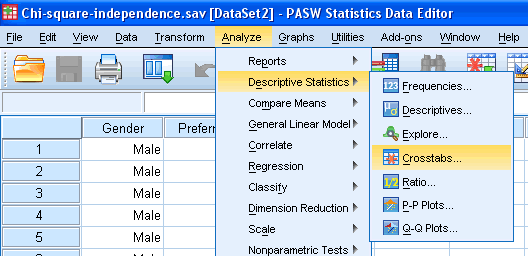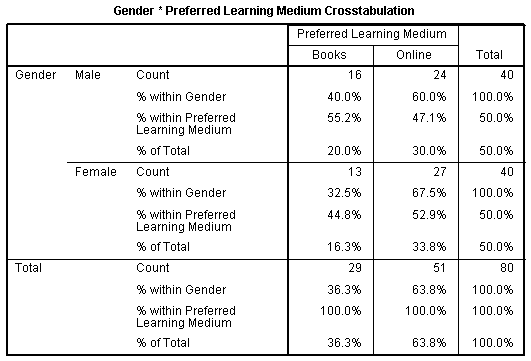CHI SQUARE ANALYSIS AND NULL HYPOTHESIS
This
test allows us to compare a collection of categorical data with some
theoretical expected distribution. This test is often used in genetics to
compare the results of a cross with the theoretical distribution based on
genetic theory. Suppose you preformed a simple monohybrid cross between two
individuals that were heterozygotes for the trait of interest.

Cross-tabulation analysis has its own unique language, using
terms such as “banners”, “stubs”, “Chi-Square Statistic” and “Expected Values.”
OUTPUT:

NULL HYPOTHESIS:
Hypothesis testing works by collecting
data and measuring how likely the particular set of
data is, assuming the null hypothesis is true. If the data-set is very
unlikely, defined as being part of a class of sets of data that only rarely
will be observed, the experimenter rejects the null hypothesis concluding it
(probably) is false.
If significant value is
less than 0.05 then null hypothesis will not be considered.Now we can said that
there is relationship between services &stores.In routine
business,significant value is around 0.05.
Correlation:
Correlation is computed into what is
known as the correlation coefficient, which ranges between -1 and +1. Perfect
positive correlation (a correlation co-efficient of +1) implies that as one
security moves, either up or down, the other security will move in lockstep, in
the same direction. Alternatively, perfect negative correlation means that if
one security moves in either direction the security that is perfectly
negatively correlated will move in the opposite direction. If the correlation
is 0, the movements of the securities are said to have no correlation; they are
completely random.
In real life, perfectly correlated securities are rare, rather you will find securities with some degree of correlation.
In real life, perfectly correlated securities are rare, rather you will find securities with some degree of correlation.

SUBMITTED BY:PALAK JAIN
GROUP MEMBERS:
NIDHI
NITESH SINGH PATEL
NITESH BORATWAR
PALLAVI BIZOARA

No comments:
Post a Comment